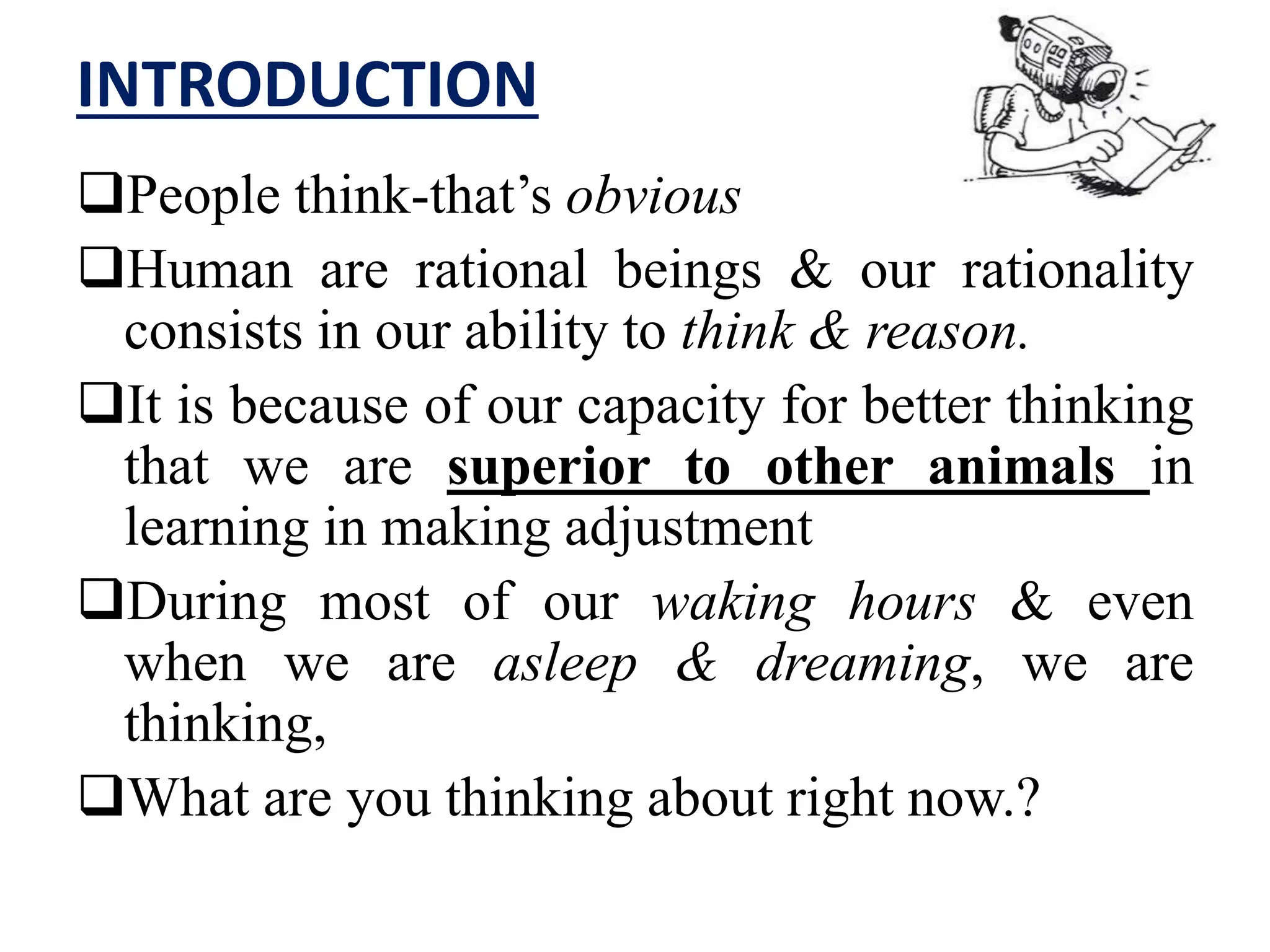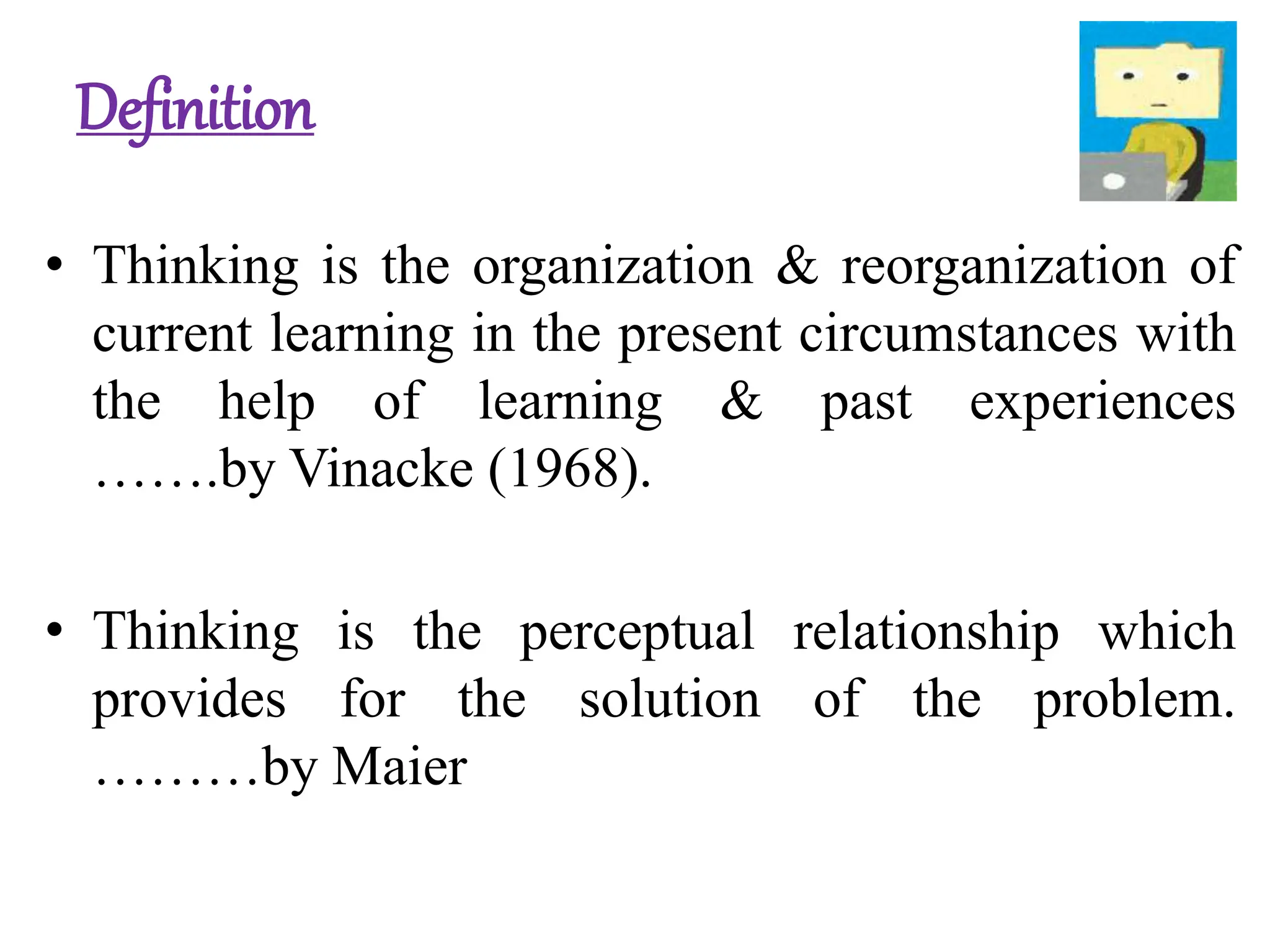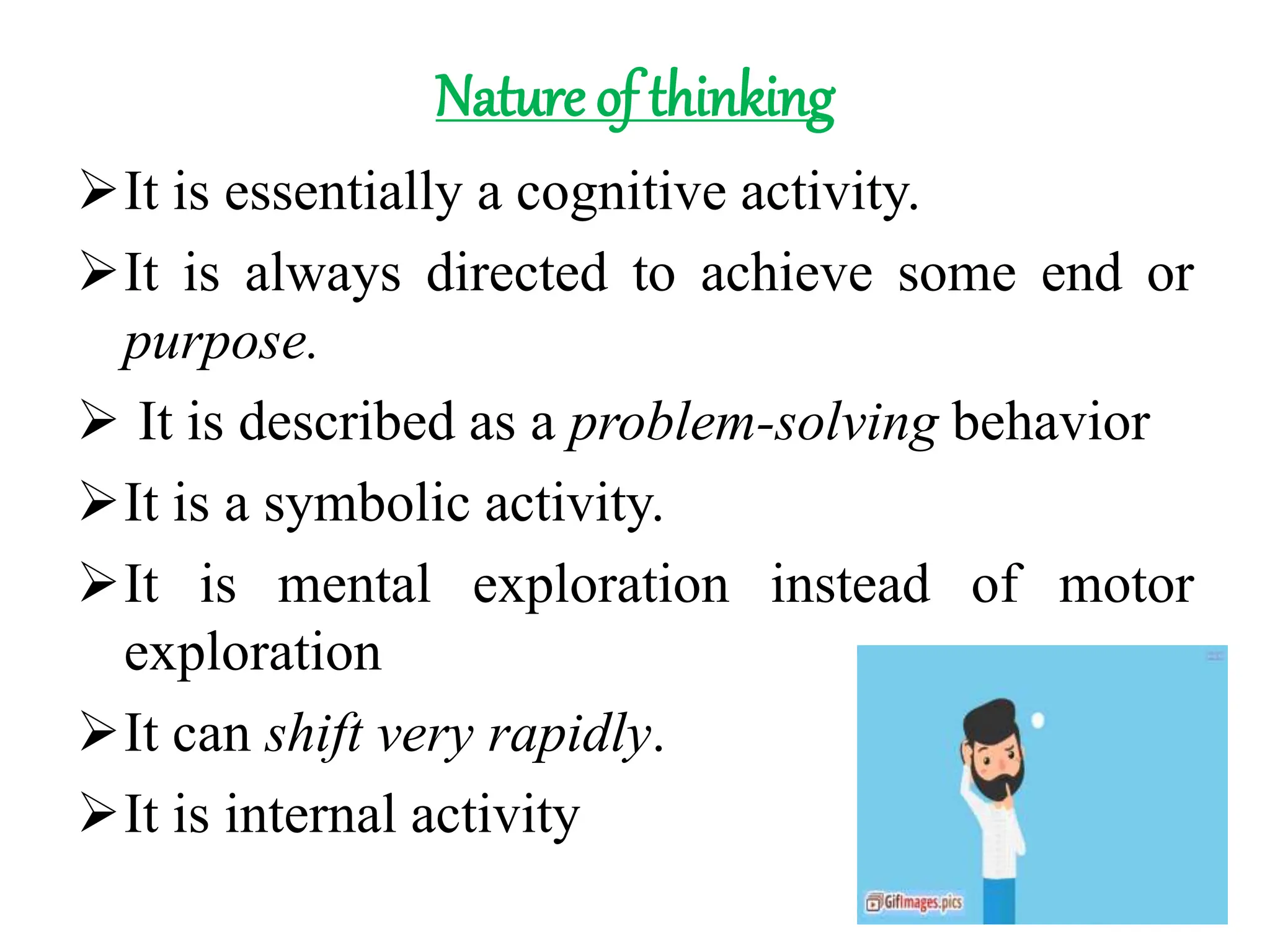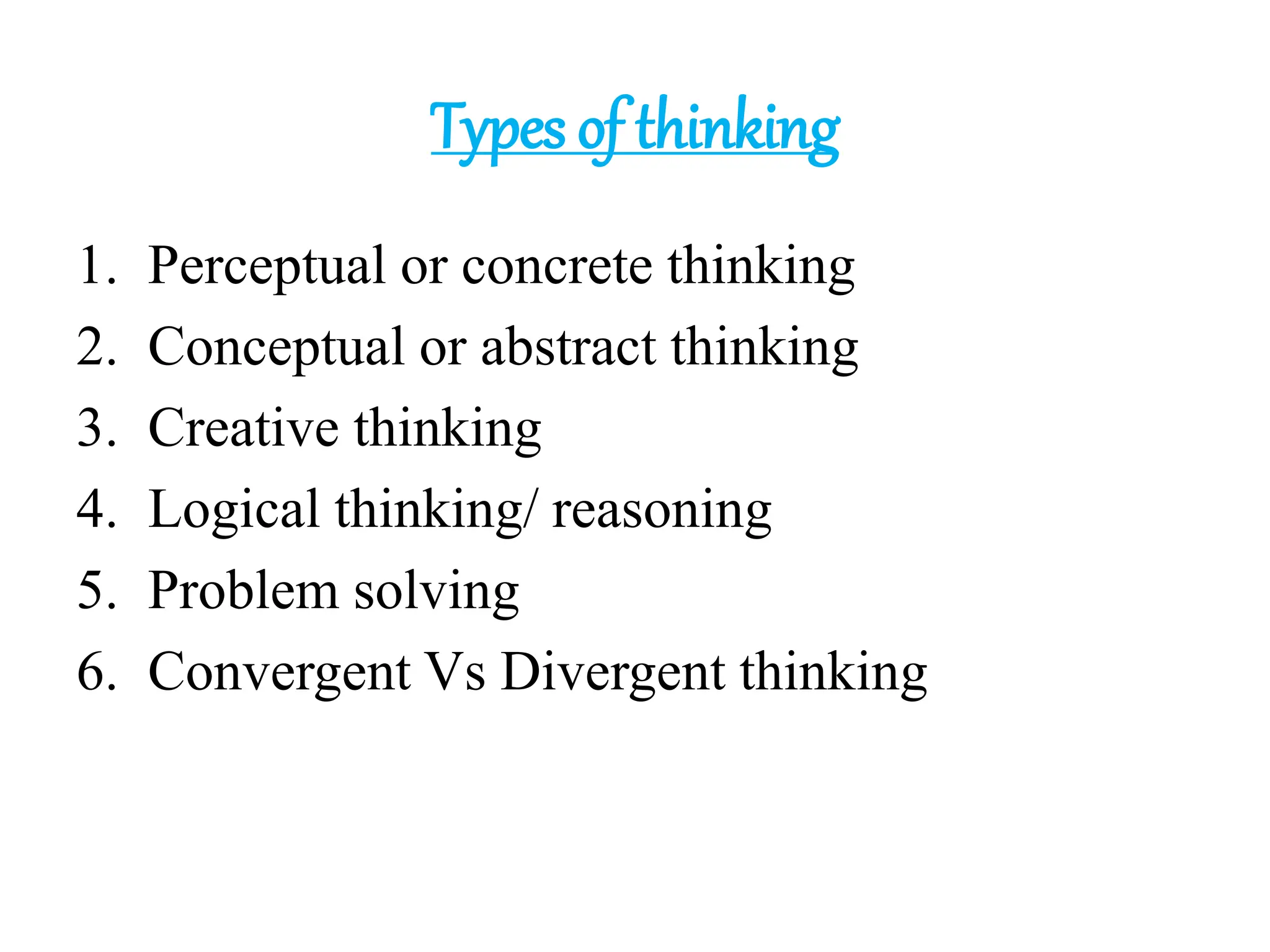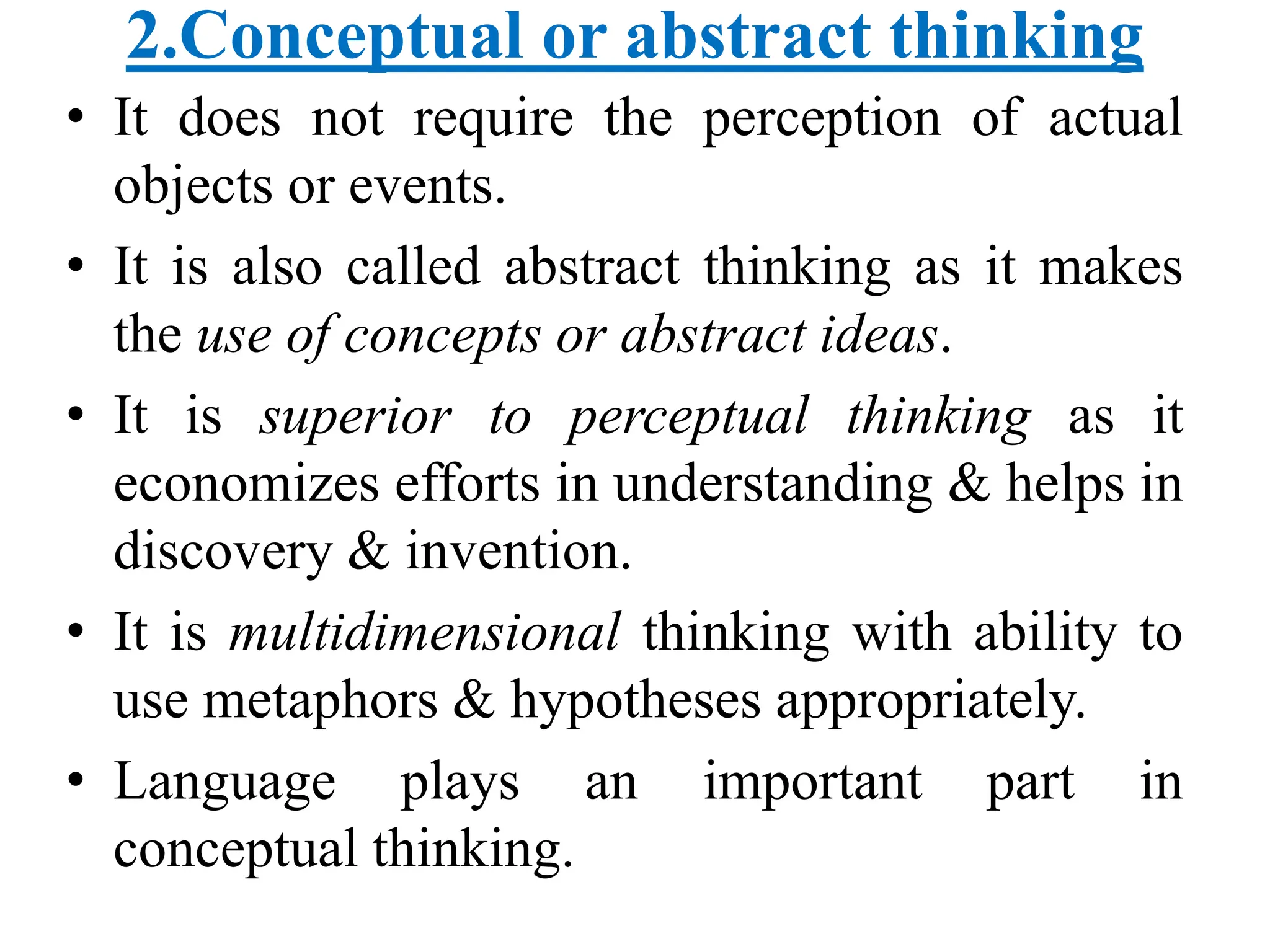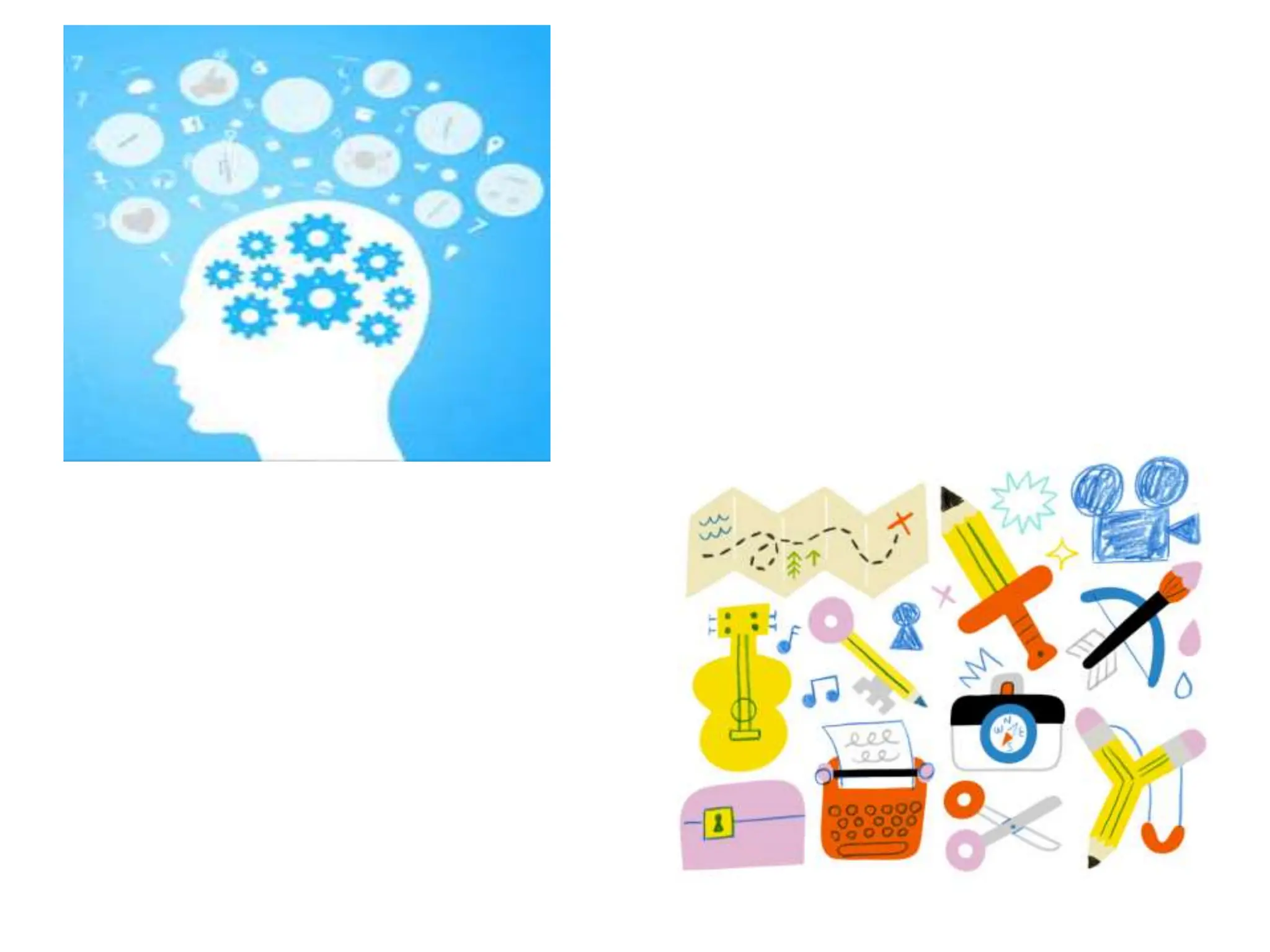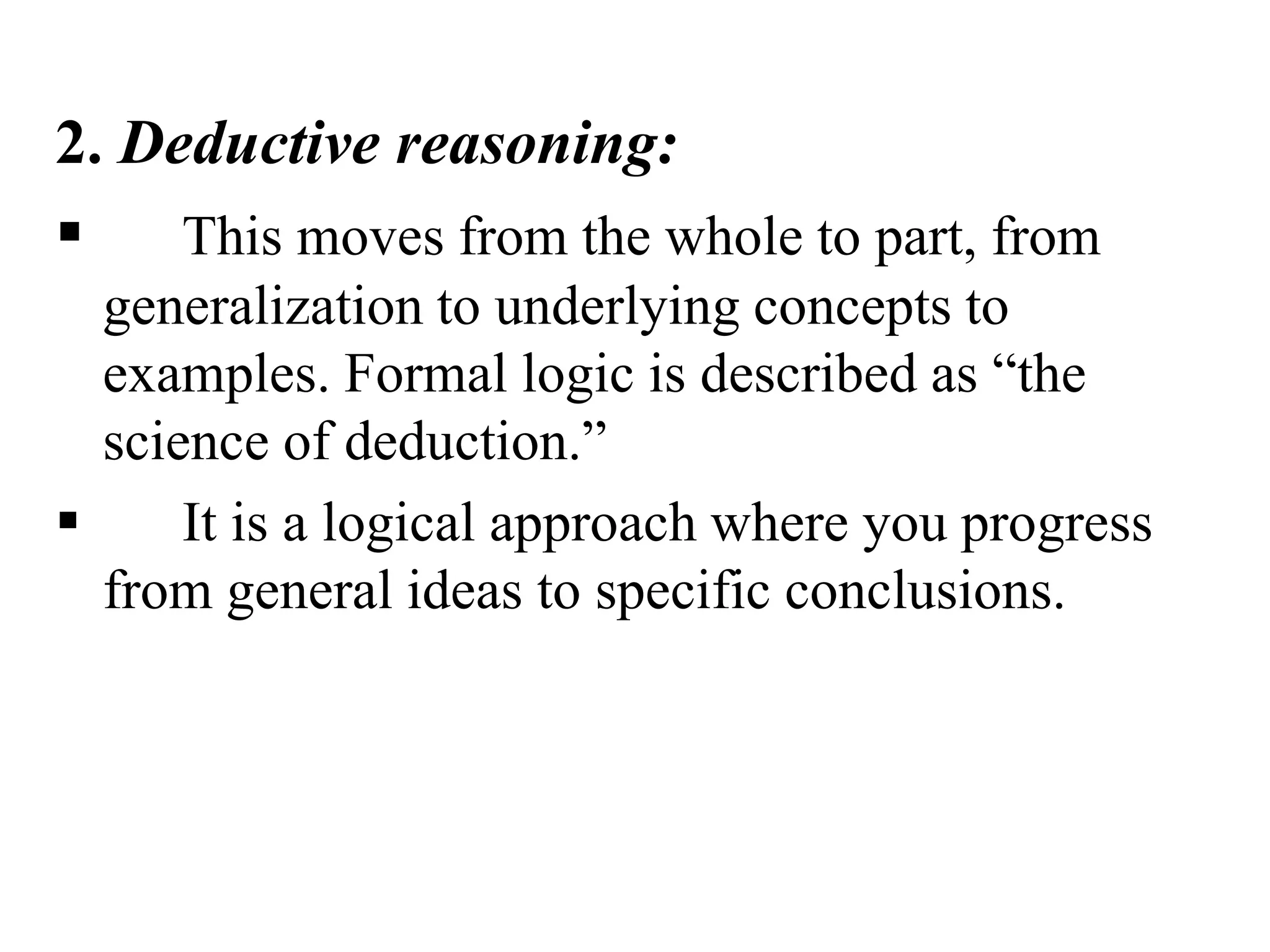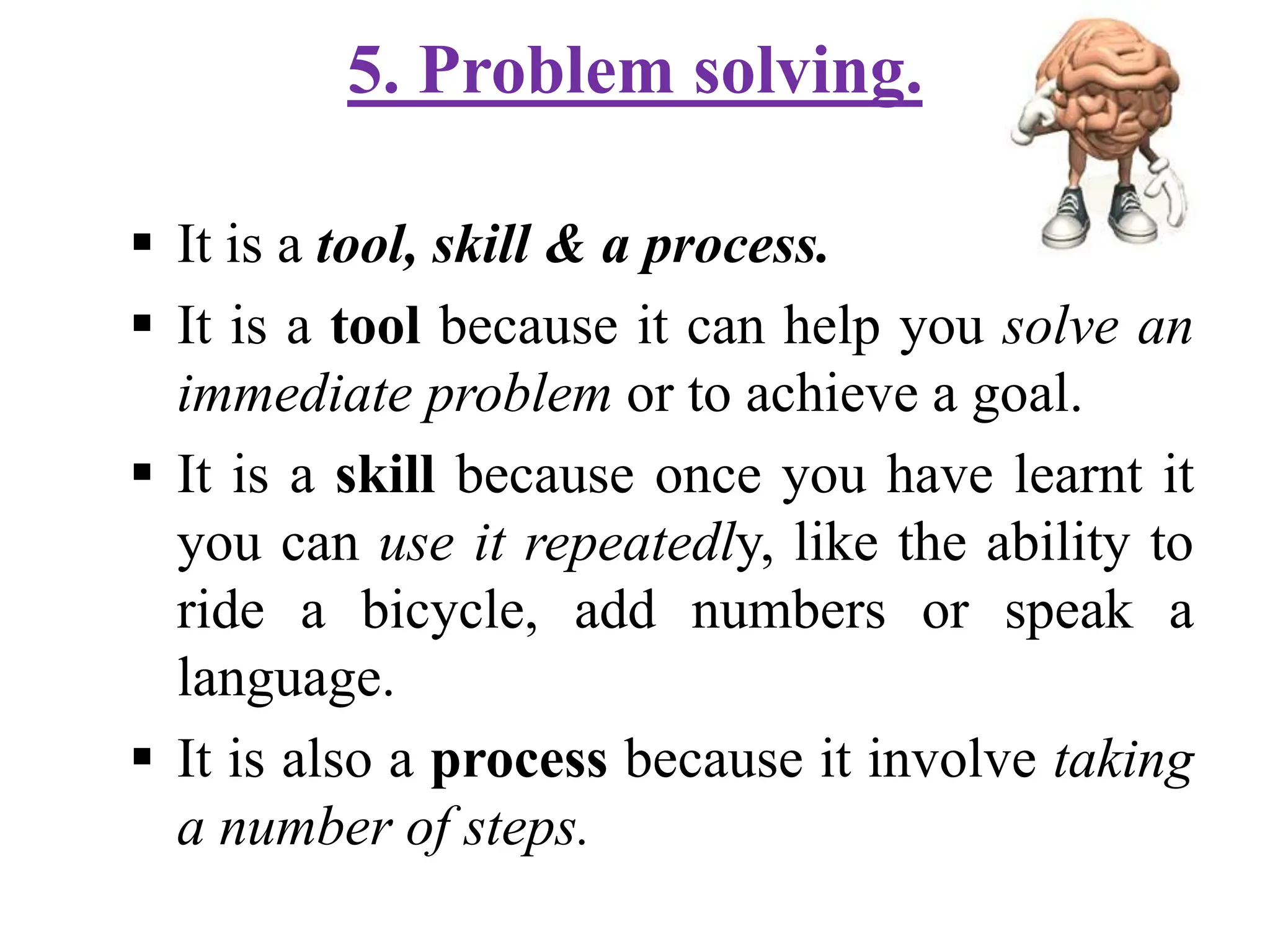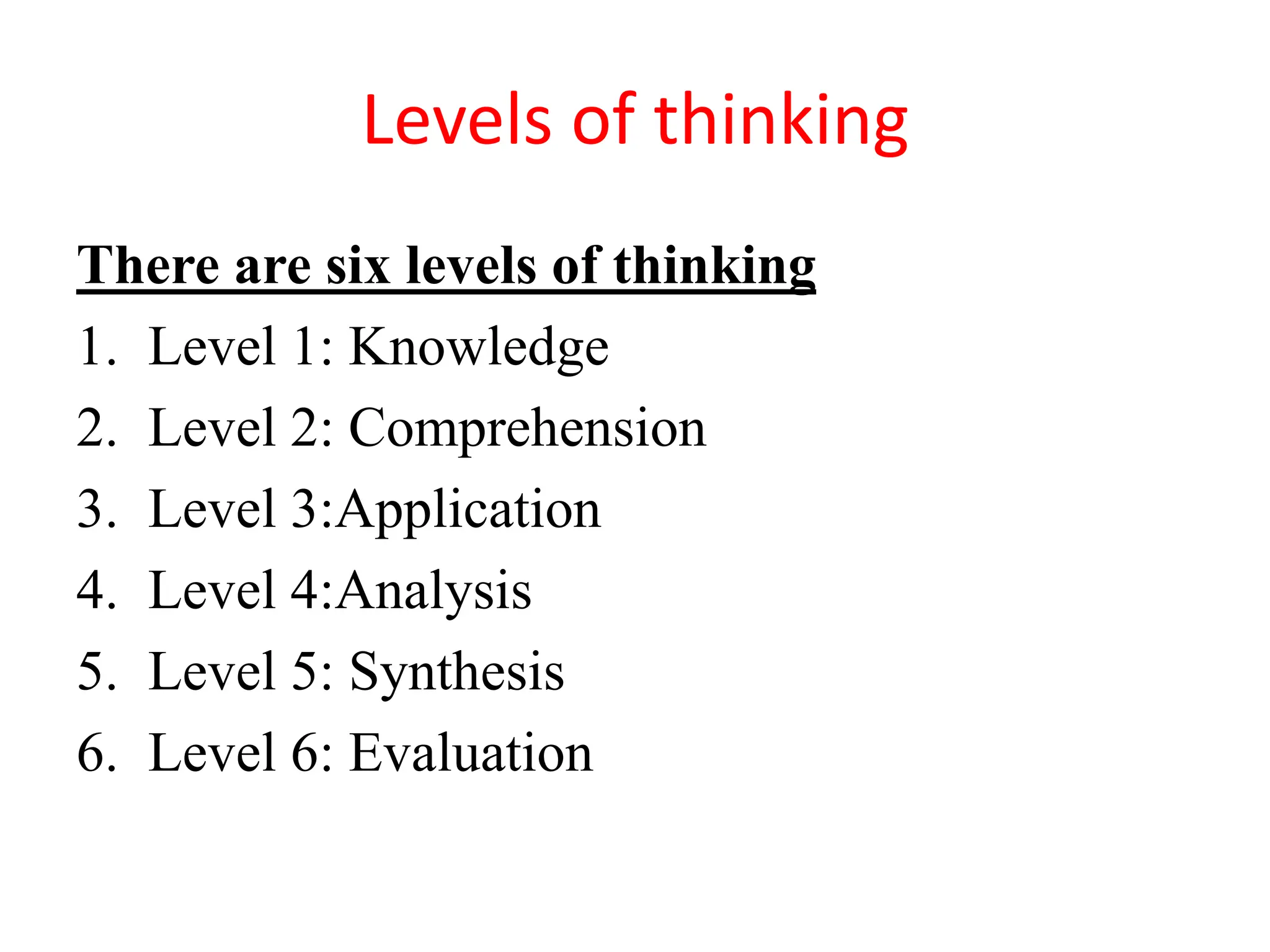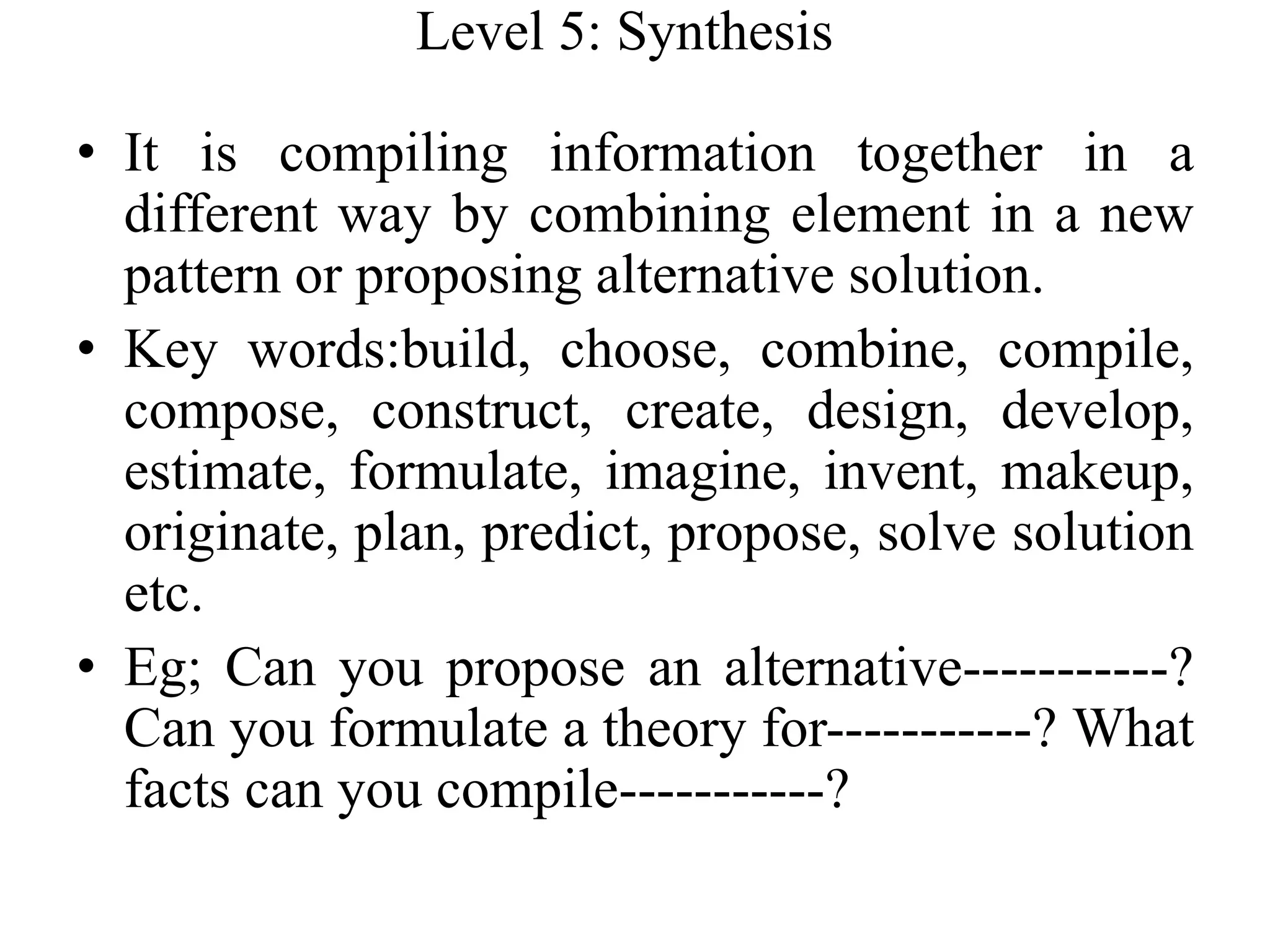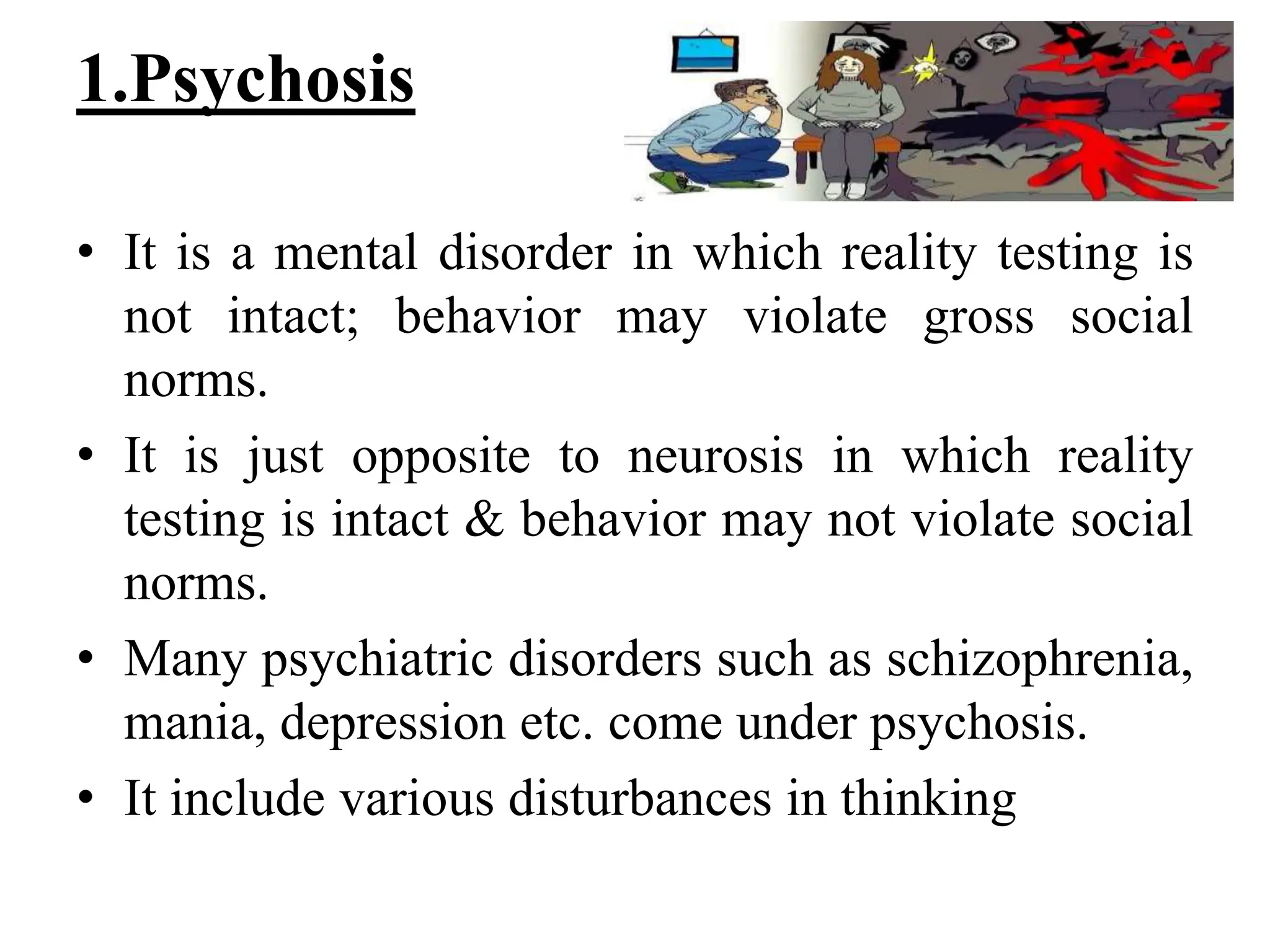1. The document discusses various topics related to thinking and reasoning, including definitions, types of thinking, levels of thinking, ways to improve thinking, and alterations in thinking.
2. It defines thinking as the organization and reorganization of current learning with past experiences, and reasoning as combining past experiences to solve new problems.
3. The types of thinking discussed are perceptual, conceptual, creative, logical, problem-solving, and convergent vs divergent thinking. The levels of thinking range from basic knowledge to complex evaluation.


